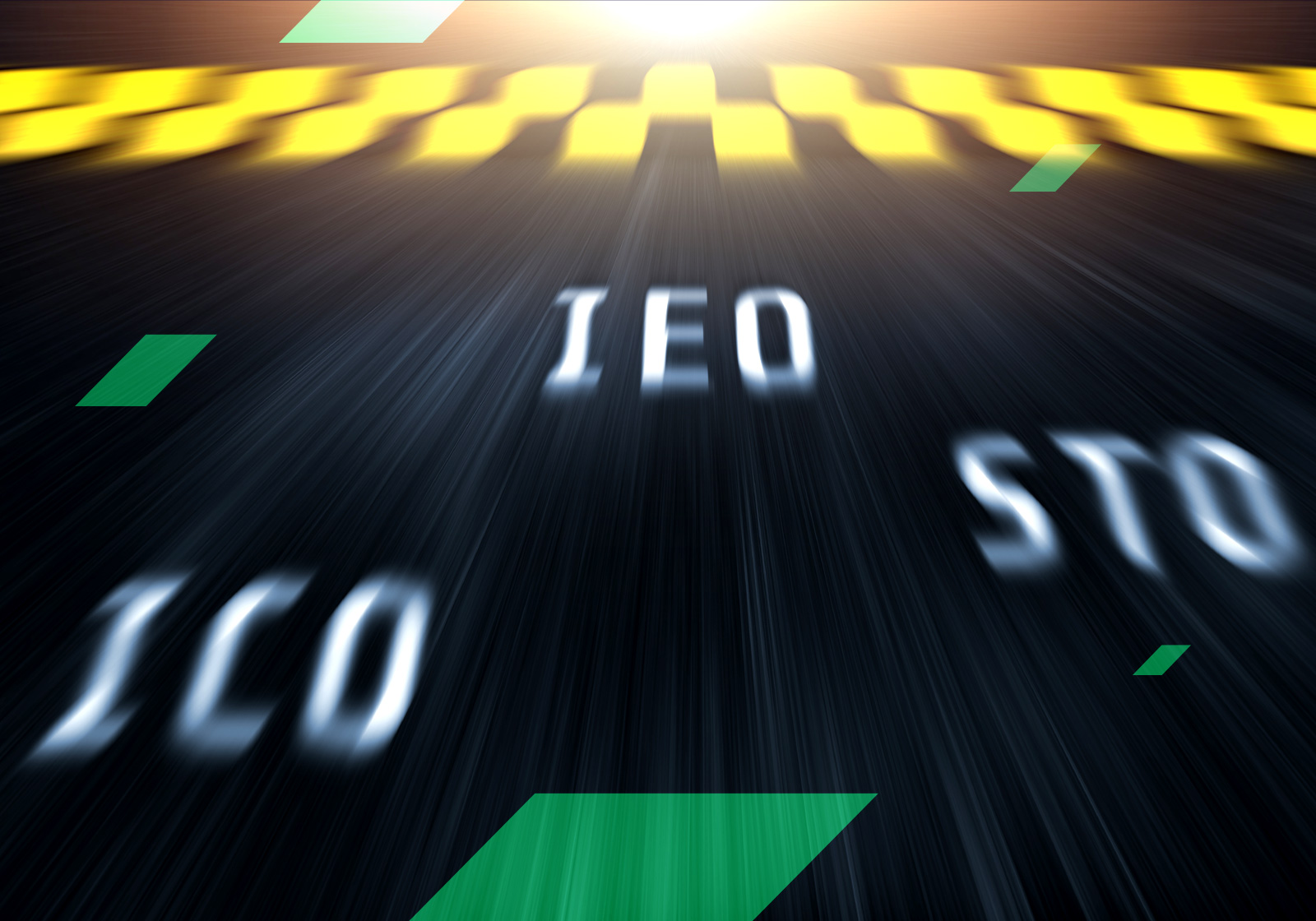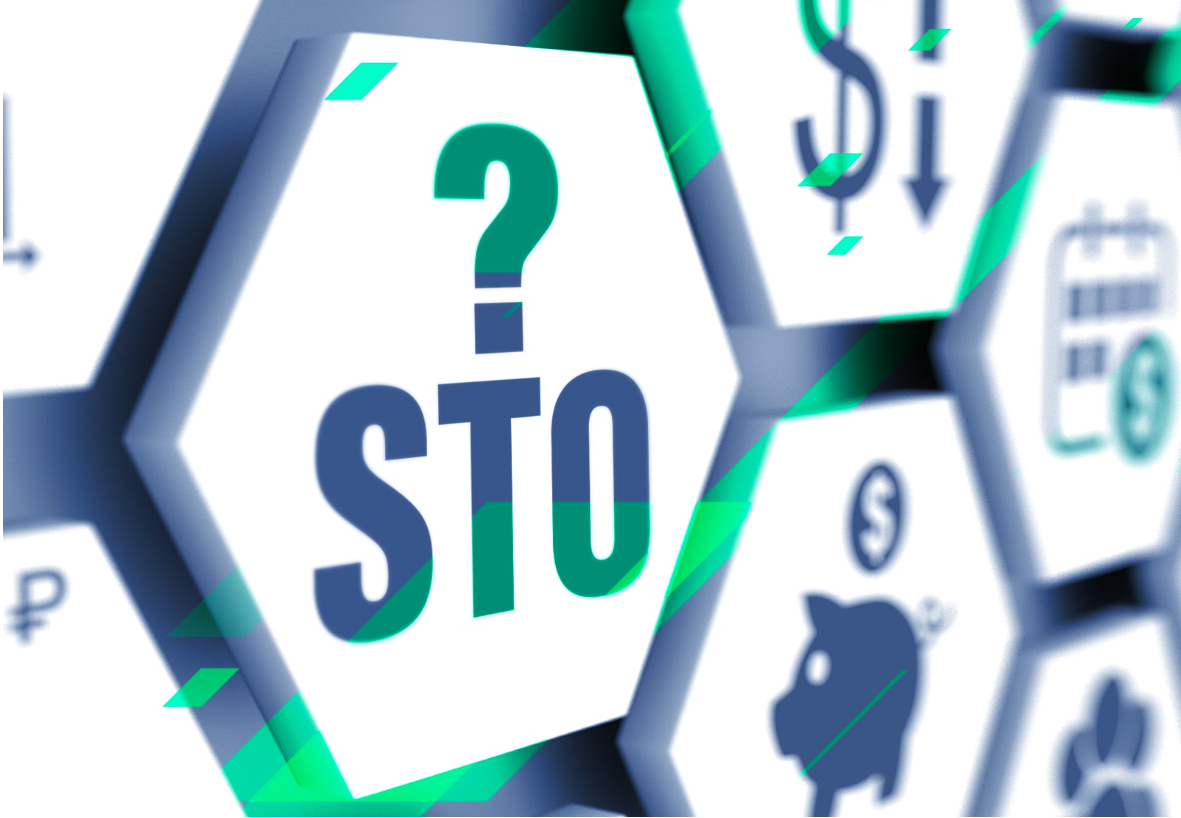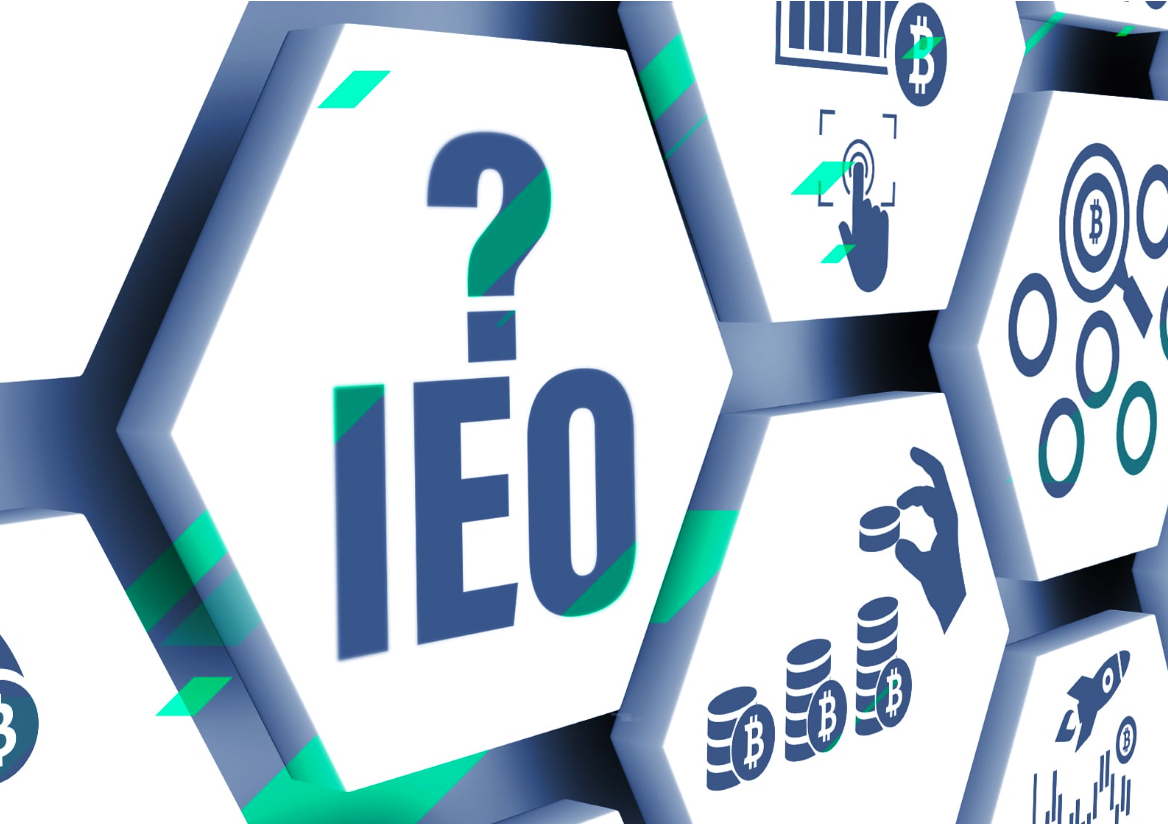ICO vs STO vs IEO vs IPO: How to Choose and Evaluate a New Crypto Project

Are you feeling lost in crypto fundraising? With acronyms like IPO, ICO, STO, and IEO floating around, it's no wonder that retail investors find navigating the options challenging. If you want to understand the differences between these fundraising models and how to make informed decisions, you're in the right place.
What is ICO?

ICOs, or Initial Coin Offerings, are events where cryptocurrency tokens are issued to investors in exchange for capital. The main goal of crypto ICOs is to raise funds for new crypto and blockchain technology projects or decentralised applications (DApps). These tokens typically represent future access to the project's products or services.
Blockchain projects began using ICOs in July 2013, when Mastercoin held what is thought to be the very first ICO coming up. In new ICO listings, the blockchain company sells tokens to investors, typically in exchange for BTC or ETH, to raise funds for the project's ongoing development.
ICOs became extremely popular around 2017, with projects like Ethereum, EOS, and Tezos raising substantial amounts through token valuation and sales. These events garnered global attention and investment due to the potential for high returns.
In recent years, ICOs have faced increasing regulatory scrutiny in various countries, leading to legal challenges and restrictions. Governments have been concerned about fraudulent projects and the need to protect investors.
Pros of ICOs:
- Easy to participate as long as you have BTC or ETH in your wallet.
- ICO campaigns often include bounty programs and airdrops that allow users to get some tokens for free.
Cons of ICOs:
- The lack of regulation has seen many fake or scam projects raise funds and disappear with investor money.
- Once you buy the token, you still need it to be listed on an exchange to trade it.
- It's very high risk. In addition to the prevalence of scams, there's also the risk that the token's price will drop following the ICO.
STO in Detail

Security Token Offerings (STOs) differ from ICOs as they are more regulated and secure for crypto fundraising. STOs involve issuing tokens backed by real-world assets like equity in a company, real estate, or commodities. They are designed to comply with existing securities regulations. Successful STO investments in real estate, art, and venture capital have shown the potential of this crypto fundraising method. They manage real asset tokenisation and offer fractional ownership.
Pros of STOs:
- Eliminating scams and fraud due to adherence to regulatory frameworks like the SEC in the US and FINMA in Europe.
- Tokens are backed by the issuing company's assets, providing real value.
Cons of STOs:
- Participation in STOs requires accreditation by the SEC, establishing a high barrier to entry for investors.
- Similar to ICOs, waiting for a token listing on an exchange is necessary to enable trading.
What is IEO?

The most recent fundraising method in use is known as Initial Exchange Offerings (IEOs), which are an alternative to ICOs as tokens are directly sold from an exchange platform.
IEOs function similarly to ICOs, but the exchange platform assumes full responsibility for the crypto fundraising process, including evaluating the crypto and blockchain technology project's legitimacy and potential for success.
Binance has taken the lead in offering Initial Exchange Offerings, with its Launchpad being the largest and most renowned platform for IEOs. Other platforms include Huobi Prime, OKX Jumpstart, Bittrex International, KuCoin Spotlight, and others.
Pros of IEOs:
- Low barrier to entry; verified account holders with cryptocurrency on the IEO platform can participate.
- The exchange platform conducts project vetting to ensure trustworthiness.
- Tokens are immediately listed on the exchange and available for trading.
Cons of IEOs:
- No guarantee that the token price will increase after the IEO.
- Tokens remain utility tokens without any assets or tangible value backing them.
Overview of IPO in the Crypto Space

An initial public offering (IPO) is when a privately owned cryptocurrency company sells its business assets to the public through new issuance. This allows the company to raise capital from public investors but also requires compliance with regulations that mandate increased disclosures and transparency.
Before a crypto IPO, a company is considered private and is owned by a few stakeholders, such as founders, their family and friends, or venture capitalists. The IPO is seen as a significant milestone for cryptocurrency businesses from a regulatory perspective, considering the initial scepticism and concerns about fraudulent activities in the early days of cryptocurrencies.
To launch a crypto IPO, a crypto company engages with underwriters or investment banks to introduce their coins to the public, who evaluate and assume risks in exchange for a fee. This process, known as underwriting, involves the investment bank acting as a broker between the issuing firm and the public to facilitate the sale of its initial coins.
Following an IPO, the company's crypto assets are traded on a crypto exchange, marking the transition to a publicly traded asset. This status comes with increased reporting standards due to regulatory requirements, enhancing the crypto company's prestige.
As a business grows to the point where it can handle the benefits and responsibilities of being publicly traded, it signals its intent to be listed on a crypto trading exchange. Before it's listed, the value of share ownership is determined through private deals since, after listing, the value of the company's coins is influenced by supply and demand on the exchange.
Pros of IPOs:
- Crypto IPOs provide an effective means for companies to raise capital, facilitating financial growth and development.
- Going public enhances a cryptocurrency company's exposure and prestige by trading on the stock market.
- The liquidity of a company's IPO coins is significantly boosted when it goes public, making it easier for existing coin holders to buy and sell.
Cons of IPOs:
- Conducting an IPO is expensive, involving hiring underwriters, ongoing production of company reports, and increased legal and accounting costs for compliance.
- Publicly traded firms are at risk of disclosing information that competitors can use to gain a strategic advantage.
- Making an IPO opens the door to activist investors who can significantly influence the company's direction, potentially leading to instability.
Key Differences Between ICO, STO, IEO, IPO
IPOs, ICOs, IEOs, and STOs are all different crypto fundraising methods. IPOs involve listing a company's shares on a stock exchange, while ICOs raise funds by selling new cryptocurrency tokens to investors. IEOs are token sales conducted on crypto exchanges, and STOs offer tokenised securities tied to underlying assets.
Look at the comparison table below for a more detailed review of their differences.
Feature | ICO | STO | IEO | IPO |
Regulatory Compliance | Mostly Unregulated | Regulated (Security Offering) | Depends on jurisdiction | Heavily Regulated |
Investor Rights | Token Ownership | Ownership + Rights | Token Ownership | Share Ownership |
Security Type | Utility Tokens | Security Tokens | Utility Tokens | Shares |
Investor Accreditation | Usually Open to All | Verification Required | Depends on Exchange Rules | Usually Restricted |
Token Liquidity | Variable, Often Illiquid | Improved Liquidity | Depends on Exchange Rules | Traded on Stock Exchange |
Crypto Fundraising Process | Direct from the Issuer | Direct from the Issuer | Through an Exchange Platform | Through Underwriters |
Listing Process | Independent | Dependent on Exchange Approval | Exchange Facilitated | Facilitated by Underwriters |
Issuance Platform | Self-Hosted Platforms | Security Token Platforms | Cryptocurrency Exchanges | Stock Exchanges |
Investor Protection | Limited | Enhanced through Regulation | Depends on Exchange Rules | Stringent Regulatory Oversight |
Use of Funds | Unrestricted | Specific Use Case | Determined by Exchange Rules | Stipulated in Prospectus |
Global Accessibility | Generally Global | Compliance with Local Regulations | Depends on Exchange Rules | Global |
Token Price Setting | Determined by Market | Fixed or Variable | Set by Exchange or Issuer | Set by Underwriters/Market |
Duration of Offering | Set by the Issuer | Typically Longer | Usually Quick | Longer (Several Weeks) |
Legality and Regulation
Initial Coin Offerings (ICOs), Security Token Offerings (STOs), Initial Exchange Offerings (IEOs), and Initial Public Offerings (IPOs) are all methods used by companies to raise capital. Still, they have different structures and legal considerations.
ICO legal considerations involve issuing digital tokens or coins to investors in exchange for funding. They became popular in cryptocurrency, but their regulatory status varies globally. Many countries have issued guidelines or warnings about the potential risks associated with ICO trading, emphasising the importance of compliance with existing securities laws. In some jurisdictions, ICO trading may be subject to securities regulations, while others have implemented specific frameworks for their regulation.
STOs are designed to comply with securities regulations from the beginning. Security tokens represent ownership in an underlying asset or company, subjecting them to the same legal scrutiny as traditional securities. Companies conducting STO investments must adhere to securities laws to ensure investor protection.
IEOs involve crypto fundraising through cryptocurrency exchanges, facilitating token sales. The legal status of IEOs depends on the jurisdiction, and the regulatory landscape can vary. In some cases, IEO platforms may be subject to securities regulations, and compliance with these regulations is essential to avoid legal issues.
IPOs are traditional crypto fundraising events where a private company transitions to becoming publicly traded by offering shares to the public. IPOs are heavily regulated, with stringent requirements imposed by financial authorities to protect investors. Companies going public must comply with disclosure requirements, financial reporting standards, and other regulatory obligations.
In summary, the legality and regulation of ICOs, STOs, IEOs, and IPOs vary globally, and companies engaging in these crypto fundraising activities must navigate the complex regulatory landscape of the jurisdictions in which they operate. Compliance with securities laws and investor protection regulations is crucial to ensure the legitimacy and success of these fundraising mechanisms.
Tags
Try our Bitcoin Cloud Miner and get additional crypto rewards based on your trading volume. It's immediately available upon registration.
Try our Bitcoin Cloud Miner and get additional crypto rewards based on your trading volume. It's immediately available upon registration.
FAQ
How Do Regulatory Requirements Differ for ICO, STO, IEO, and IPO?
The regulatory requirements for ICO, STO, IEO, and IPO differ significantly. ICOs are unregulated and at risk for scams, while STOs fall under securities laws and prioritise investor protection. IEOs, a type of ICO, involve crypto exchange facilitation and investor procedures. IPOs are traditional methods that demand strict regulatory compliance and ongoing public reporting.
Why Are So Many Options Available in Crypto Funding?
ICOs were designed as an alternative to IPOs, providing blockchain companies with a method to raise capital for their projects without sacrificing any equity in the company. The unregulated nature of ICOs made it convenient for projects to conduct crypto fundraising campaigns. However, this lack of regulation also made it easy for scammers, fraudsters, and dishonest individuals to create projects solely for financial gain.
In response, the STO was introduced to address one of the main issues of ICOs: the absence of any recourse for investors if the project fails or disappears. STO registration is regulated under SEC and FINMA requirements, linking STO tokens to real equity and ensuring the legitimacy of projects using this crypto fundraising method. This eliminates concerns about projects vanishing with investor funds.
On the other hand, IEOs represent a hybrid approach. Although there is no equity backing the tokens launched through an IEO, the listing exchange platform conducts due diligence. The exchange is responsible for investigating the financial condition, risks, project development, market position, product viability, and other factors. When an exchange permits an IEO, it assumes a reputational risk if the project proves to be unsound. This heightened risk leads to increased trust from buyers.
Which crypto fundraising mechanism should I choose?
Selecting the most suitable fundraising mechanism from ICO, STO, IEO, and IPO depends on several project-specific factors, goals, and regulatory considerations:
- For early-stage projects prioritising speed and simplicity, ICOs may be a fitting option, but it's essential to be mindful of the regulatory risks involved.
- STOs offer a regulated pathway for projects emphasising investor protection and compliance with securities laws.
- IEOs, overseen by cryptocurrency exchanges, provide a level of trust and access to an existing user base. However, projects should be prepared for listing fees and adherence to exchange rules.
- IPOs, a traditional and heavily regulated method, are suitable for established companies seeking to go public and willing to undergo thorough regulatory scrutiny.



